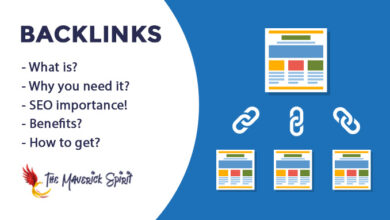Ensuring Measurement Accuracy Through Calibration

In any industry where precise measurements are essential, calibration plays a pivotal role. It is the process of ensuring that measurement instruments are producing accurate readings by comparing them to a recognized standard. This practice is fundamental to the science of metrology, which focuses on measurement accuracy and reliability. Without regular calibration, instruments may drift from their accurate readings, leading to potentially serious consequences, whether it be in product quality, regulatory compliance, or safety. In this article, we will delve into the concept of calibration, its benefits, and why it is indispensable in industries reliant on precise measurement.
Understanding Calibration
At its core, calibration is a comparison between the measurement values obtained from a device and a reference standard with a known value. The goal is to detect, correct, or account for any measurement discrepancies. For example, consider a pressure gauge in a manufacturing plant. Over time, the gauge may begin to show slight inaccuracies due to environmental wear or internal drift. To calibrate the gauge, it would be compared against a certified pressure standard, such as a deadweight tester, to verify whether its readings are accurate. If discrepancies are found, adjustments can be made to the instrument, or a correction factor can be applied.
While calibration itself does not “fix” or repair faulty instruments, it provides critical data that enables users to correct errors in their measurement systems. Depending on the instrument and the type of measurement, calibration is often performed periodically to ensure the instrument continues to deliver accurate results over time.
The Importance of Calibration in Various Industries
The significance of calibration extends across numerous industries where precision is crucial. From the aerospace and automotive sectors to healthcare and pharmaceuticals, reliable measurements are vital for product quality, safety, and compliance with regulations.
1. Quality Assurance and Product Consistency
One of the primary reasons for calibration is to ensure the consistency of products. In manufacturing, for example, small measurement errors can lead to defective products, which, if unchecked, may compromise entire production lines. Calibrated instruments help ensure that products meet strict specifications, minimizing the risk of defects and ensuring that each item produced is consistent in quality.
In industries like pharmaceuticals or food processing, where regulatory standards are stringent, calibration is even more crucial. A slight variance in temperature or chemical composition can lead to products that fail to meet safety standards or even pose health risks. Calibration ensures that the equipment used to measure such variables is accurate, safeguarding product quality and consumer safety.
2. Regulatory Compliance
Many industries are subject to regulatory standards that require regular calibration of measuring instruments. For instance, ISO standards (such as ISO 9001) and FDA regulations in the United States mandate that companies maintain calibration records and ensure instruments are regularly calibrated. Failure to meet these requirements can result in non-compliance penalties, shutdowns, or the loss of industry certifications.
In the healthcare sector, for example, medical equipment such as blood pressure monitors, thermometers, and imaging machines must be regularly calibrated to ensure they provide accurate diagnostics. Inaccurate readings from uncalibrated instruments could lead to misdiagnoses or inappropriate treatments, making calibration critical for patient care.
3. Improved Safety
The consequences of inaccurate measurements extend beyond defective products; they can also impact safety, especially in fields like aviation, transportation, and energy production. For instance, in aviation, the calibration of altimeters, speed indicators, and navigation systems is essential for ensuring the safety of flights. Inaccurate readings could lead to catastrophic results, such as collisions or navigation errors.
In the energy sector, particularly in nuclear power, precise measurements are critical for monitoring reactor conditions. Instruments that measure temperature, pressure, and radiation levels must be accurately calibrated to avoid dangerous situations. Calibration, in these contexts, ensures the safety of both personnel and the public.
4. Cost Savings and Efficiency
Regular calibration also contributes to cost savings by reducing waste and rework. Instruments that produce inaccurate measurements can lead to flawed products or processes, which in turn increases production costs. For example, in manufacturing, a poorly calibrated machine might produce parts that are out of specification, leading to wasted materials or costly reworking of the product. Over time, the cost of these errors can accumulate significantly.
By calibrating instruments on a regular schedule, companies can catch potential issues early and avoid expensive mistakes, reducing downtime and increasing operational efficiency. Moreover, ensuring that instruments are accurate also reduces the likelihood of customer returns or warranty claims due to defective products.
The Calibration Process
The calibration process generally involves a series of well-defined steps:
- Selection of a Reference Standard: A reference standard, such as a certified calibration tool or instrument, is chosen based on its traceability to international or national standards. This ensures that the standard being used is accurate and reliable.
- Comparison of Measurements: The instrument to be calibrated is compared to the reference standard under controlled conditions. For example, a scale might be tested by placing certified weights on it and observing any discrepancies between its readings and the known mass of the weights.
- Error Identification: Any deviations or errors in the instrument’s readings are identified and documented. The degree of deviation may be expressed as an “uncertainty,” which quantifies the potential range of measurement error.
- Adjustment and Documentation: If necessary, adjustments are made to the instrument to bring its measurements back within an acceptable range of accuracy. A calibration certificate is then issued, detailing the instrument’s performance, the reference standards used, and any corrections applied.
Best Practices for Calibration
To maximize the benefits of calibration, certain best practices should be followed. First, instruments should be calibrated at regular intervals, as specified by industry standards or the manufacturer’s recommendations. Instruments that are used frequently or in harsh environments may need more frequent calibration.
Additionally, it’s important to maintain a clear calibration schedule and records. This documentation not only ensures traceability but also helps demonstrate compliance with regulatory bodies. Furthermore, the environment in which calibration is performed should be controlled, as factors like temperature, humidity, and vibration can affect measurement accuracy.
Conclusion
In conclusion, calibration is a cornerstone of precision in metrology and is essential for ensuring the accuracy, reliability, and safety of measurements across various industries. Whether it’s ensuring product quality, meeting regulatory standards, or safeguarding public safety, calibration is a critical process that underpins the success of countless operations. By committing to regular calibration, industries can enhance efficiency, reduce costs, and maintain the high standards required in today’s competitive marketplace.



